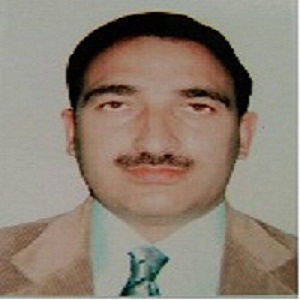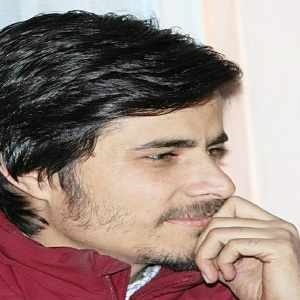principal@gdcboysang.ac.in |
01932-222308
| Year of Establishment | 1969 |
| Faculty Position | Associate Professor (01) : Assistant Professors (04) |
| Intake capacity | 150 |
| Importance |
Botany is the scientific study of plant life. As a branch of biology, it is also called plant science(s), phytology, or plant biology. Botany covers a wide range of scientific disciplines that study plants, algae, and fungi including: structure, growth, reproduction, metabolism, development, diseases, and chemical properties and evolutionary relationships between the different groups. The study of plants and botany began with tribal lore, used to identify edible, medicinal and poisonous plants, making botany one of the oldest sciences. From this ancient interest in plants, the scope of botany has increased to include the study of over 550,000 kinds or species of living organisms. As with other life forms in biology, plant life can be studied from different perspectives, from the molecular, genetic and biochemical level through organelles, cells, tissues, organs, individuals, plant populations, and communities of plants. At each of these levels a botanist might be concerned with the classification (taxonomy), structure (anatomy and morphology), or function (physiology) of plant life. Historically, botany covers all organisms that were not considered to be animals. Some of these "plant-like" organisms include fungi (studied in mycology), bacteria and viruses (studied in microbiology), and algae (studied in phycology). Most algae, fungi, and microbes are no longer considered to be in the plant kingdom. However, attention is still given to them by botanists, and bacteria, fungi, and algae are usually covered in introductory botany courses. The study of plants has importance for a number of reasons. Plants are a fundamental part of life on Earth. They generate the oxygen, food, fibres, fuel and medicine that allow higher life forms to exist. Plants also absorb carbon dioxide through photosynthesis, a minor greenhouse gas that in large amounts can effect global climate. It is believed that the evolution of plants has changed the global atmosphere of the earth early in the earth's history and paleo-botanists study ancient plants in the fossil record. |
| Infrastructural facilities | The department is since its inception housed in a separate 2- storied building with 8 compartments. In the ground floor there are two lecture theatres, each of about 150 student's capacity, a store room and a wash room for the staff. One of the lecture theatres has been converted into the Edu-sat cum Audio-Visual Centre of the College. In the first floor there are 5 rooms, consisting 2 labs - one larger, (25x 25) feet and another smaller, (25 x 15) feet, one staff room, and an office for the staff. Laboratory Facilities: For the smooth conduct of practical in the 3 year degree course classes we possess, although inadequate, one big and another smaller laboratory. The former has a capacity for 50 students and the latter with just 20 pupil accommodation. Botanical Museum: A spacious, rich and diverse museum is available in the dept. It contains a vast array of plant specimens preserved in formalin jars representing their morphological, anatomical and above all taxonomical features. Anatomical and ultra-structural details of plant organs, tissues and macromolecules like DNA are illustrated by mould-models. Paleontological and ethanobotonical sections of the museum are also an attraction here. Materials available in the museum are used as a resource for practical observations and demonstrations of the students. |
| Achievements | The department is since its inception housed in a separate 2- storied building with 8 compartments. In the ground floor there are two lecture theatres, each of about 150 student's capacity, a store room and a wash room for the staff. One of the lecture theatres has been converted into the Edu-sat cum Audio-Visual Centre of the College. In the first floor there are 5 rooms, consisting 2 labs - one larger, (25x 25) feet and another smaller, (25 x 15) feet, one staff room, and an office for the staff. Botanical Museum: The department has over the years developed spacious, rich and diverse museum. It contains a vast array of plant specimens preserved in formalin jars representing their morphological, anatomical and above all taxonomical features. Paleontological and ethno-botanical sections are an attraction of the museum. Further, anatomical and ultra-structural details of plant organs, tissues and macromolecules like DNA are illustrated by mound models. Materials available in the museum are used as a resource for practical observations and demonstrations of the students. Botanical Garden:The department has over the years developed a rich botanical garden of 100x200ft. dimensions in front of the department, which contains a large number of local as well as alien plants that serve as a resource for recreational, academic and experimental purposes. The presence of roses, tulips, lilies, dahlias and many more ornamentals in the botanical garden bestow a beautiful look during spring and summer. Trees like deodar, cypress, cupressus and magnolias are evergreen. The exotic plant, Santolina cupresseformis is a beautiful, attractive aromatic evergreen low bush in the Botanic garden. Some fruit trees are also grown here. Flowers of Campsis grandiflora, Fritillaria roylae, and Lilium panthera are very rich in nectar. Presence of tree species like Ginkgo biloba, Taxus, Taxodium and other gymnosperms and similarly angiosperms like weeping and goat willow, among others, have surely added to the grandeur of our botanic garden. Herbal Park:The department has recently developed a rich Herbal Park in a regular rectangular plot (175x50ft.) behind the department building. This Herbal Park features a large number of medicinally important and pleasantly aromatic herbaceous plants that are a specialty of the park. Some endangered plants like Paratiopsis jackmontiana (Posh) have also been preserved in the park. |








-
Address
Department of Botany
Government Degree College Anantnag - 192101 -
Phone
01932-222308
-
Email
principal@gdcboysang.ac.in





